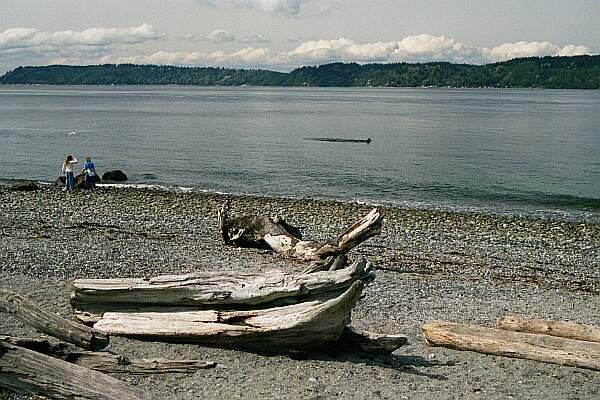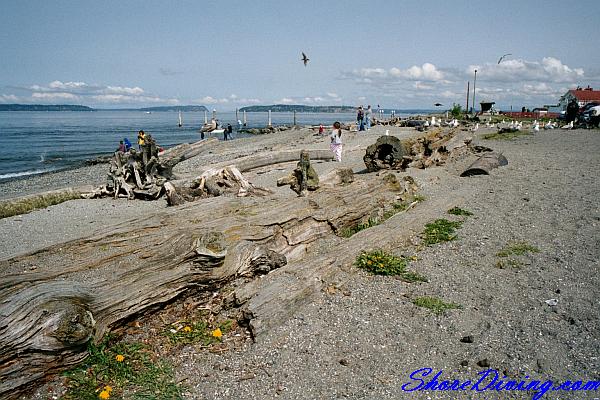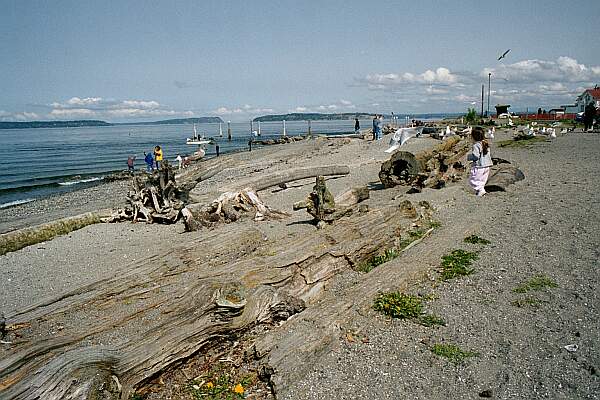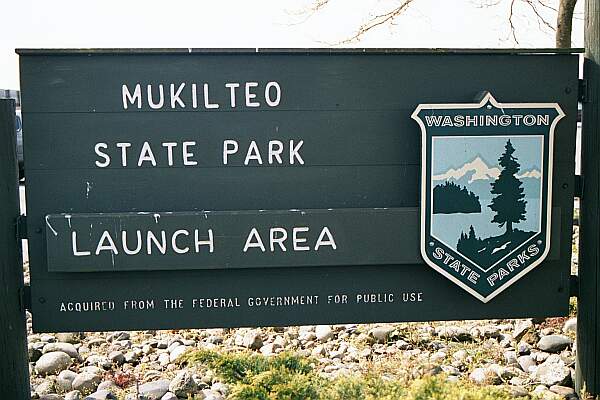Difficulty
Unrated
Viz (last reported 105108h ago)
Max Depth
Unknown
Snorkeling and Scuba Diving at Mukilteo State Park
Of the three dives at Mukilteo, this is the best location to off-gas. Make your first dive at the Oil Dock or the T Dock, and drop by here for a little lunch and your second dive. There are two walls here, one at 30 feet and other at 60 feet, with plenty to see in between!
Take exit 189 off I-5 in Everett, and head West on 526. Then head North on 525. Follow signs to the Mukilteo Ferry. Take a left at the intersection just after you pass over the railroad tracks (See the aerial photo).
Access
shore
View
Nearby Shops
Tide Report
5
4
3
2
1
(7)
Zentacle
Sep 21, 2021, 1:05 AM
scuba
A seal travels the length of the beach looking for a quick meal of Salmon.
There is plenty of parking next to the beach, so suiting up at your truck is no problem.
Not difficult to find, the park is shared by boaters and picnickers.
The entry is very easy. Start in front of the restrooms and head straight out.
You can see where the wall begins, as well as the shallows to the East.



9

Dan from Seattle
Dec 31, 2013, 12:00 AM
scuba
Four dives here in past couple of weeks. Four juvenile wolf-eels, a small GPO and a tiny GPO with 2 inch legs. See dive site layout in Flickr link: http://www.flickr.com/photos/100424548@N07/11610770196/
Originally posted on shorediving.com
Anonymous
Aug 22, 2010, 12:00 AM
scuba
Open for diving as of 21 April 2009 http://www.cdnn.info/news/industry/i090421.html
Originally posted on shorediving.com
Originally posted on shorediving.com
Anonymous
Jan 11, 2005, 12:00 AM
scuba
Site can be current-intensive but if currents are read right you can make a mini-drift dive of it.
Originally posted on shorediving.com
Jim Morrison
Feb 23, 2002, 12:00 AM
scuba
Mukilteo State Park, just south of the Mukilteo Lighthouse. (and also about 1/4 mile south of the Ferry Landing). We entered from the sandy area of the parking lot half way between the launching ramp and the bathrooms. Two of my tech diving friends dove to 218 feet! The bottom drops off quickly, and is wall-like just south of here. We went south in considerable (but workable) ebbing current, then turned around in the "Rocky" area. The current lessened or quit in deeper water. It was windy on the surface above us. Bottom type varies depending on location and depth. The so-called wall is straight out from the rest rooms and if you don't find it keep looking going south. There is a small wall at 40' then a little south of that a bigger wall at 67 feet. People say the wall erodes and produces fossils, but I haven't found any yet. I saw a few sand dabs, numerous star-fish, crabs, sculpin, shrimp and one big old moon snail. In season, divers harvest large quantities of shrimp here at night, but you have to be skillful or experienced to get the fast little devils! Excellent place to execute a deep dive, good access all year. Currents can be tricky, especially nearer the point at the lighthouse. Since boats can launch here in summer, stay away from the ramp. But in winter when no boats launch here, look for octopus holes under old concrete debris adjacent to and straight out from the launch ramp.
Originally posted on shorediving.com
Curt Johnson
Nov 13, 2001, 12:00 AM
scuba
This is another site I dive often - I can see my house from there so I can dive it on my way home from work. Head directly out from the public bathrooms. At 35 ft will be a small wave-cut ledge. At 55 ft will be a larger ledge. These ledges are where most of the sea life is. Look in the cavities left by clams to see shrimp, blennies, gobies, gunnels, crab, sailfin sculpin and grunt sculpin. Occasionally, octopus or wolf-eels will take up residence. Cabezon, lingcod, and greenling are often seen resting at the edge of a ledge. Harbor seals may be seen at any time of the year, but sea lions come by in the winter months. You have a very good chance of a sea lion encounter in the mid-winter. Winter provides better visibility and currents. Hazards include boats, jet skis, and currents. You can go as deep as you want for the bottom drops down to 900 ft.
Originally posted on shorediving.com
Other Locations Nearby